I’ve talked about this “good-no-good” joint a couple times before. Basically you turn it green, dry it for a couple days in a kiln and drive it into a green mortise. I first saw this joint in Jennie Alexander’s collection of old busted chair parts on an 18th C. post and rung chair and I’ve since seen similar joints on the ends of 18th C. Windsor spindles, which I assume means the seat was green at the time of assembly. If the joint ever loosens, it acts like a ball-and-socket joint; lots of wiggle but it can’t ever come apart, hence Jennie’s “good-no-good” moniker.
I’ll be teaching how to make a stool using this joint at Penland and probably during my Greenwood Week, so I’ve been practicing a lot.
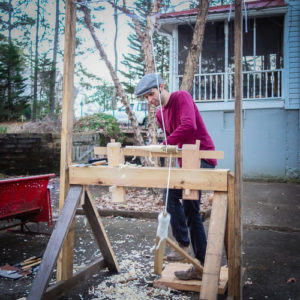
Turn the parts on the lathe.
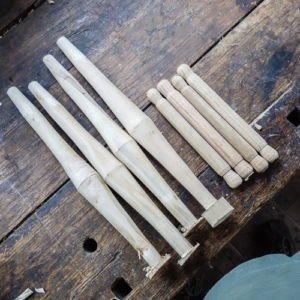
Four legs, four stretchers, all green The entire stretcher and the tenons of the legs go into the kiln for a day or two. They don’t get totally dry, but they’re drier than the mortices.
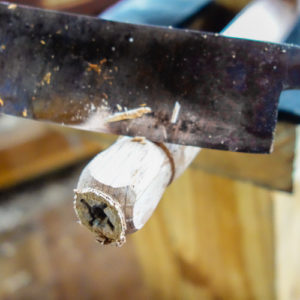
Once dry, the tenons are shaved with the drawknife…

……so they look like this.
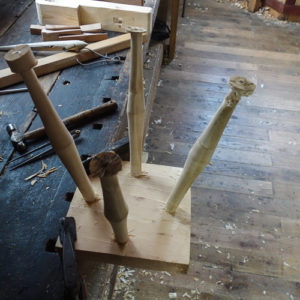
The seat is also green.
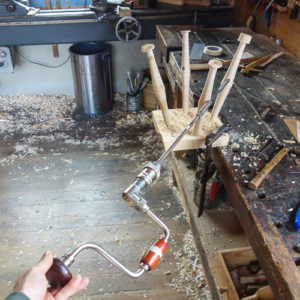
Boring holes into the legs, which have green mortices and semi-dry tenons.
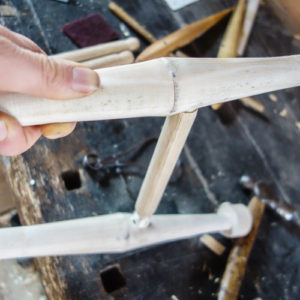
Drive it together. Glue is probably useless on joint this wet, so I don’t use it.

The tops of the seat mortices are filed oval…
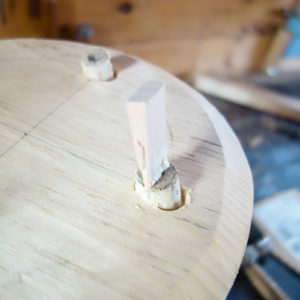
….so that when the leg tenon is wedged….
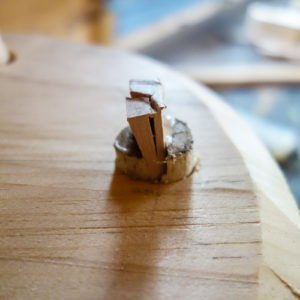
it flairs out and locks the leg in place.

The ugliest stool I’ve ever made. I’m still learning how to have control over this process, but I can see light at the end of the tunnel. What fun!
